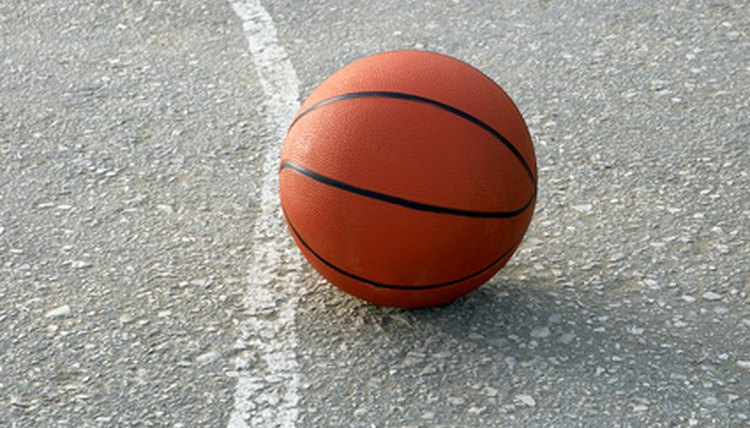NCAA Basketball Foul Rules

The NCAA, or National Collegiate Athletic Association, is responsible for setting the rules of for all college sports, including basketball. The rules of basketball specify what actions constitute a foul, the different types of fouls that can be committed and the penalties for fouls. In addition, there are guidelines for disqualifying a player for the remainder of that particular game.
Types of Fouls
Personal fouls are the most common in basketball. These are called on players for violations such as pushing, holding or striking an opponent during the course of play. Technical fouls usually result from unsportsmanlike conduct, such as arguing calls with officials or actions demeaning opposing players. However, technical fouls also can result from violations of game rules, such as wearing an illegal jersey or illegal equipment. A flagrant technical foul occurs when a player commits a gross violation such as fighting, returning to the game after being disqualified or excessively contacting a player after the ball is dead.
Foul Limits
In NCAA basketball, each player is allowed five personal fouls before being disqualified from the game. Technical fouls also count toward the personal foul limit unless it is an administrative technical foul for issues such as an illegal jersey. For example, if a player has committed one technical foul and four personal fouls, she is disqualified for the remainder of the game. In addition, if any player receives two technical fouls during a game, he is disqualified. A player is ejected from the game if she receives one flagrant technical foul.
Personal Foul Penalties
The penalty for a personal foul depends on whether the player was in the act of shooting and how many fouls the offending team has committed in the half. If the player was in the act of shooting and misses while being fouled, the player shoots two or three free throws, depending on whether the player took a two-point or three-point shot. If the fouled player makes the shot, he receives one free throw regardless of where he took the shot. If the player was not shooting, her team gets possession of the ball out of bounds unless the fouling team has committed seven or more fouls in the half. If the foul is the team's seventh, eighth or ninth foul of the half, the fouled player gets a one-and-one free throw opportunity. If the player makes the first free throw, she gets a second. If she misses the first free throw, the ball is live and play continues. If the foul is the team's 10th foul or more, the fouled player receives two free throws.
Technical Foul Penalties
When a technical foul is assessed, the offended team receives two free throws and the ball is put back in play where it was when play was stopped. For example, if team A has the ball and team B's coach gets a technical foul for arguing a call, team A would get two free throws and then would get the ball because it had possession when play was stopped. For a flagrant technical foul, the offended team gets two free throws and the ball, regardless of who had possession at the time of the foul.
References
Writer Bio
Mark Kennan is a writer based in the Kansas City area, specializing in personal finance and business topics. He has been writing since 2009 and has been published by "Quicken," "TurboTax," and "The Motley Fool."
